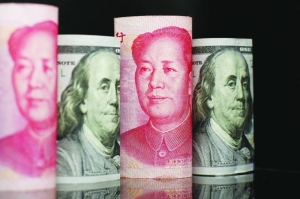



Interest rates play a crucial role in the global economy, with implications for financial markets, portfolio allocation, borrowing costs, and financial stability. Central banks have kept interest rates low to stimulate economic activity and support recovery from the COVID-19 pandemic. However, as the global economy recovers and inflationary pressures build, there is growing speculation that central banks will need to raise interest rates to prevent overheating and curb inflation [2a6fde46]. This potential shift in monetary policy could lead to increased volatility in financial markets and a reevaluation of asset valuations. Higher interest rates could also impact borrowing costs for businesses and consumers, potentially slowing down economic growth [2a6fde46].
The price of money, or the interest rate, has been falling for over 30 years but is now on the rise. Central banks control the price of money by adjusting interest rates, aiming to balance saving, investment, and inflation. The natural rate of interest needs to be close to the inflation target, which is typically 2%. If the interest rate is set below the natural rate, there is too much investment, not enough savings, and inflation occurs. If the interest rate exceeds the natural rate, there is too much savings, not enough investment, and unemployment rises [2f587356]. The price of money has been falling due to weaker growth and a decline in savings. However, this trend is changing, with recent increases in interest rates. The generation that helped push borrowing costs down, the Baby Boomers, is now exiting the workforce, resulting in a decrease in savings. Millennials and Gen Xers have not saved as much for retirement. China's slowing economy and reduced investment in US Treasuries also affect the price of money [2f587356].
According to a report from Gulf Times, the global savings glut, identified by former Federal Reserve chair Ben Bernanke almost 20 years ago, is drying up, which may lead to higher borrowing costs [34fe9101]. Factors such as aging populations, an embattled Chinese economy, and a fragmented global economy are contributing to a shortfall in savings. This could result in a reversal of the trend towards lower interest rates, forcing borrowers to pay more for a dwindling supply of excess cash. Former European Central Bank President Mario Draghi predicts a decrease in the global supply of savings due to geopolitical rivalry and transactional economic relations. China's role as a major supplier of savings may also diminish due to pressure from the US on trade and technological fronts. The International Monetary Fund projects a decline in China's savings, which will affect the global supply of savings. Some economists, however, believe that the world economy may not be entering a new era of higher interest rates, as societies are aging but people are also living longer, prompting more judicious spending by the elderly and increased savings by the young. The Federal Reserve is considering the possibility that the neutral interest rate may be higher than before the pandemic, but their focus is mainly domestic. It is argued that the Fed cannot push US rates below world levels without risking higher inflation [34fe9101].
Understanding the implications of rising interest rates and the changing dynamics of the global savings glut is crucial for individuals, businesses, and policymakers to navigate the potential challenges and opportunities that come with a rate cliff in the global economy [2a6fde46] [34fe9101].
Recent analysis by CEPR highlights the changing dynamics of the natural rate of interest and its implications for monetary policy [d7dcac67]. The natural rate of interest, which indicates where interest rates are heading in the medium term, has increased after the COVID-19 pandemic. This increase is attributed to changes in the balance between saving and investing and a possible shift to a more inflationary environment. Estimates of the natural rate have risen in both advanced and emerging market economies. However, there is high uncertainty surrounding the measurement of the natural rate. Factors such as trend real growth, dependency ratios, fiscal deficits, and geopolitical fragmentation contribute to the uncertainty. The conduct of monetary policy over time may also affect the natural rate. Monetary policy strategies and expectations of a tighter monetary policy in a more inflationary environment may have raised perceptions of the natural rate. The assessment of the natural rate is important for central banks in their monetary policy strategy reviews [d7dcac67].